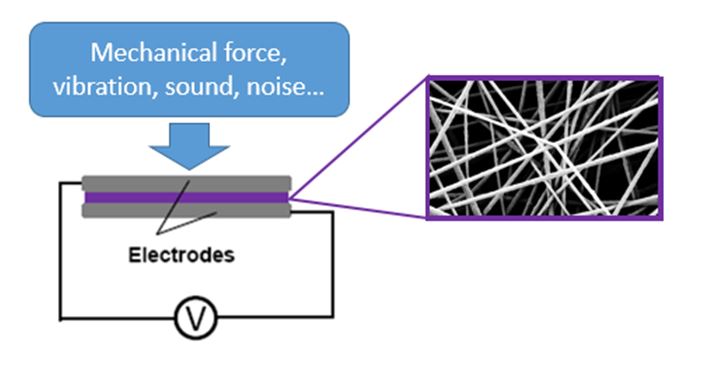Video Article Open Access
Electrospinning and Piezoelectric Nanofibers
Tong Lin
Institute for Frontier Materials, Deakin University, Geelong, Victoria 3216, Australia
Vid. Proc. Adv. Mater., Volume 1, Article ID 2020-0830 (2020)
DOI: 10.5185/vpoam.2020.0830
Publication Date (Web): 03 Nov 2020
Copyright © IAAM
Graphical Abstract

Abstract
Electrospinning is a simple but efficient method to prepare polymeric nanofibers, and electrospun nanofibers have shown broad applications in diverse fields, ranging from biomedical, healthcare, and chemical engineering to electronics, environmental protection, energy, and functional textiles [1]. In the recent decade, significant progress has been made in the mass production of nanofibers using electrospinning. Various electrospinning designs are developed, and their commercialization promotes the practical applications of both electrospinning technology and electrospun nanofibers. Moreover, some unique properties have been observed on electrospun nanofibers, especially in the conversion of mechanical forces, vibrations, and sounds into electrical energy. Our team started working on electrospinning since 2004. We explored several aspects of this technology and developed unique needleless setups for making nanofiber nonwoven membranes and continuous nanofiber yarns [2]. Some of the setups are already used in commercial areas. We also uncovered that electrospun nonwoven membranes from polyvinylidene fluoride (PVDF) have a strong piezoelectric property, and no poling is required for the preparation of the piezoelectric membranes [3]. Piezoelectric nanofiber membrane could be used to convert mechanical energy, sound, and noise into electrical power [4]. The electrospun PVDF membranes have over four times higher electric outputs than their piezoelectric film counterparts. Electrospinning can realize the piezoelectric potential of polymer materials. For example, under the same conditions, the piezoelectricity of electrospun polyacrylonitrile is greater than that of electrospun PVDF [5]. This lecture will introduce the research activities of our team in the development of needleless electrospinning and piezoelectric nanofibers.
Keywords
Electrospinning, nanofibers, piezoelectric, acoustoelectric.
References
- T. Lin, J. Fang, Fundamentals of Electrospinning and Electrospun Nanofibers, DEStech Publications, 2017.
- T. Lin, X. Wang, Needleless Electrospinning: Technology and Applications, Stanford Publisher, 2013.
- J. Fang, X. Wang, T. Lin, Journal of Materials Chemistry, 2011, 21, 11088.
- C. Lang, J. Fang, H. Shao, X. Ding, T. Lin, Nature Communications, 2016, 11108.
- W. Wang, Y. Zheng, X. Jin, Y. Sun, B. Lu, H. Wang, J. Fang, H. Shao, T. Lin, Nano Energy, 2019, 56, 588.
Biography
Tong Lin obtained a Ph.D. in physical chemistry from the Chinese Academy of Sciences in 1998. Since 2013, he has been a Professor and Personal Chair of Deakin University. Before that, he served as a Research Academic, Senior Research Fellow, and Associate Professor at the Deakin University. Prof Lin has been an active researcher in the field of electrospinning, functional fibers, and polymers. He contributes to the development of needleless electrospinning technology for large-scale production of nanofibers and novel applications of nanofiber materials in various fields. Prof Lin has authored or co-authored over 270 peer-reviewed journal articles, 37 books/book chapters, and 90 other papers. Based on the Google Scholar database, the total citation of his publications is over 12,400, with an h-index over 61. Prof Lin has also been awarded the Australian Research Council (ARC) Future Fellow and Fellow of the Royal Society of Chemistry (RSC, UK).
Video Proceedings of Advanced Materials

Upcoming Congress



